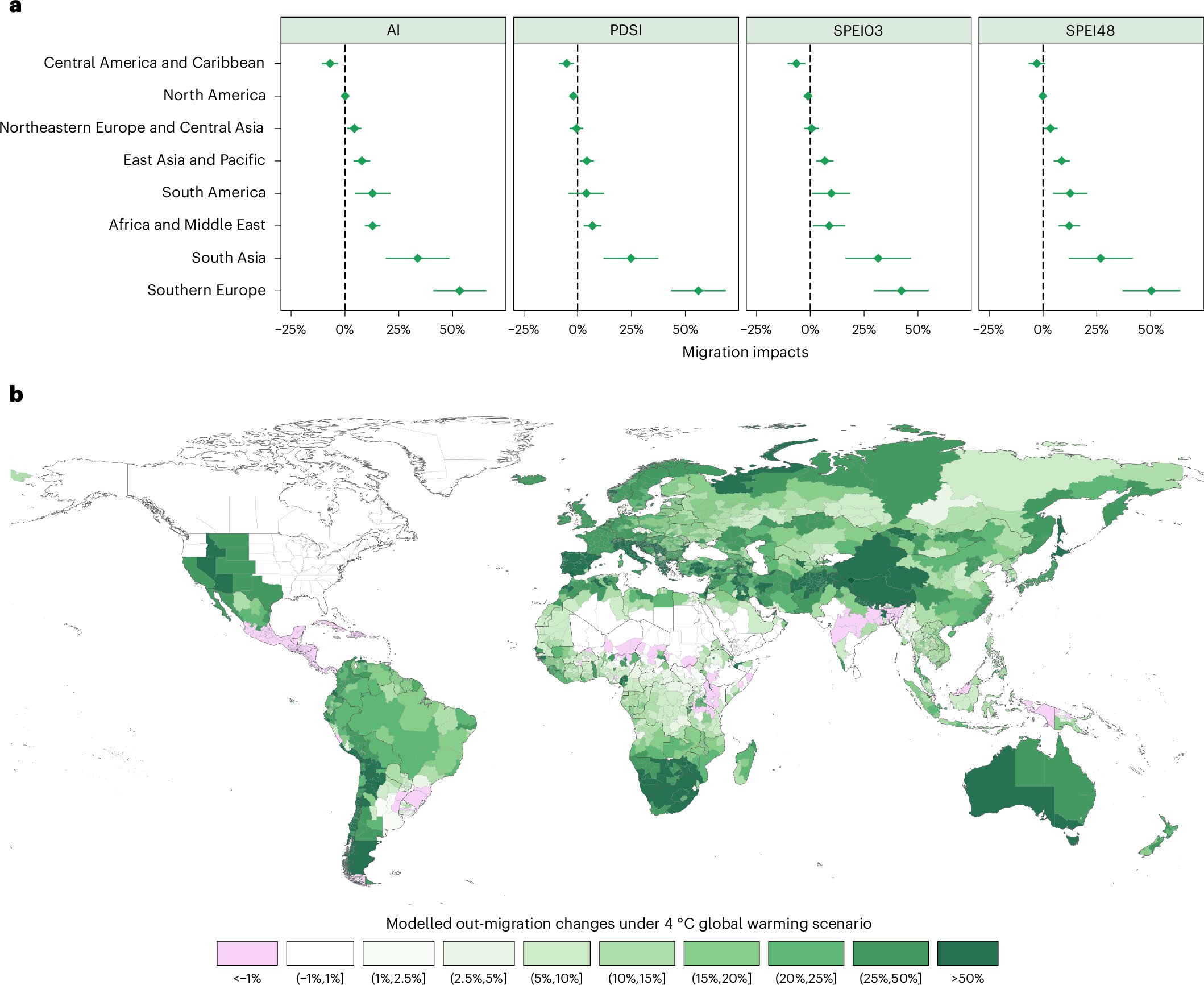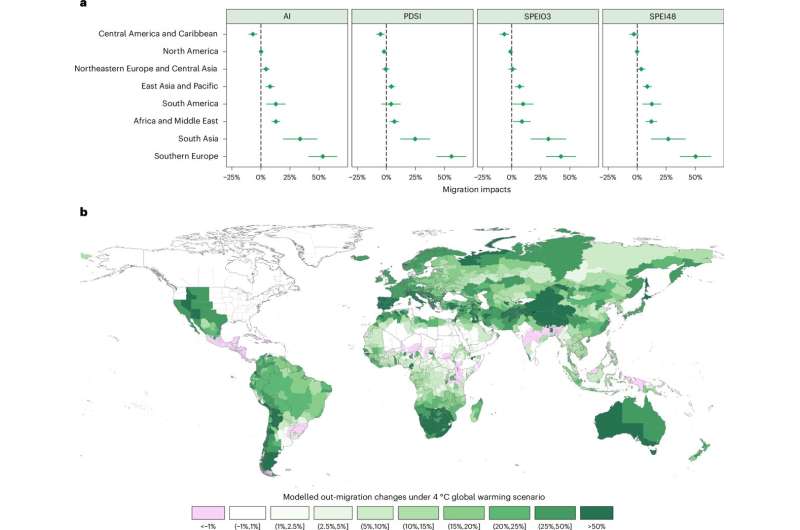

The influence of climate change on migration, both current and future, has garnered significant attention from the public and policymakers over the past decade. A new IIASA-led study has provided the first comprehensive analysis of how climate factors—specifically drought and aridity—affect internal migration.
While public discourses often focus on international migration, existing scientific evidence indicates that when climatic factors drive migration, it often results in short-distance moves within national borders. However, there is a lack of scientific studies examining climate-induced internal migration across different countries.
The new study, published in Nature Climate Change, used census microdata from 72 countries spanning the period from 1960 to 2016 to provide the first worldwide assessment of how environmental stress affects migration within national borders.
“Our analysis shows that internal migration—which we defined as movement between subnational regions within a country—increases in regions affected by drought and aridification, especially in hyper-arid and arid regions. The effects are most pronounced in agriculturally dependent and rural areas, where livelihoods are highly vulnerable to changing climate conditions.
“Many climate-induced migrants move to urban areas, contributing to the accelerated urbanization trends observed in numerous countries,” explains lead author Roman Hoffmann, who leads the Migration and Sustainable Development Research Group at IIASA.
The analysis revealed regional differences in impacts. The effects of drought and aridification were, for example, found to be strongest in parts of Africa, the Middle East, South America, South Asia, and Southern Europe, where agricultural livelihoods are prevalent and the climate is already dry. In these regions, the combination of economic hardship and environmental challenges creates strong incentives for migration.
Globally, the findings indicate overall more mobility in wealthier areas where migration constraints may be lower. Within countries, it is typically poorer regions that tend to have higher outmigration rates toward wealthier areas when they are affected by climatic stress.
In addition to regional differences, the study also documents major heterogeneities in migration patterns across population groups. In less developed countries, younger working-age adults (15–45) with medium levels of education are most likely to migrate in response to drought and increased aridity. In wealthier countries, older populations across all education levels show stronger migration patterns.
“As climate change continues to increase the frequency and severity of droughts and water scarcity worldwide, more populations will face pressures to seek better living conditions. Our work underscores the need for policies that address both the drivers of migration and the consequences for destination regions.
“Adequate infrastructure, health services, and social support systems are critical in urban areas that are increasingly absorbing climate-induced migrants,” notes co-author Guy Abel, a researcher in the IIASA Migration and Sustainable Development Research Group.
Additionally, the research highlights the importance of supporting vulnerable populations, including those who cannot migrate due to resource constraints. Policies that promote livelihood diversification, social safety nets, and resilience-building in affected communities can help mitigate forced migration and displacement, while also protecting those who remain.
Although the study represents a major step forward in understanding the links between climate change and internal migration, the authors also acknowledge the challenges posed by limited and non-comparable migration data. The dataset used in the study, extracted from census microdata, provides a robust longitudinal view on internal migration for a large number of countries. At the same time, it does not capture other forms of movement, including temporal or short-distance mobility, which are also highly relevant in the context of climate change.
“As climate change continues to reshape migration trends, more comprehensive data and continued research will be essential for developing targeted interventions and policy solutions to address the complex relationship between environmental factors and human mobility.
“Our work highlights the urgent need for a holistic approach to policy development that accounts for both spatial and social differences, recognizing the complex and context-dependent nature of migration dynamics,” concludes co-author Raya Muttarak, a researcher in the IIASA Migration and Sustainable Development Research Group and professor of Demography and the Department of Statistical Sciences at the University of Bologna, Italy.
More information:
Roman Hoffmann et al, Drought and aridity influence internal migration worldwide, Nature Climate Change (2024). DOI: 10.1038/s41558-024-02165-1
Provided by
International Institute for Applied Systems Analysis
Citation:
Climate change impacts internal migration worldwide, census data analysis reveals (2024, October 15)
retrieved 15 October 2024
from https://phys.org/news/2024-10-climate-impacts-internal-migration-worldwide.html
This document is subject to copyright. Apart from any fair dealing for the purpose of private study or research, no
part may be reproduced without the written permission. The content is provided for information purposes only.